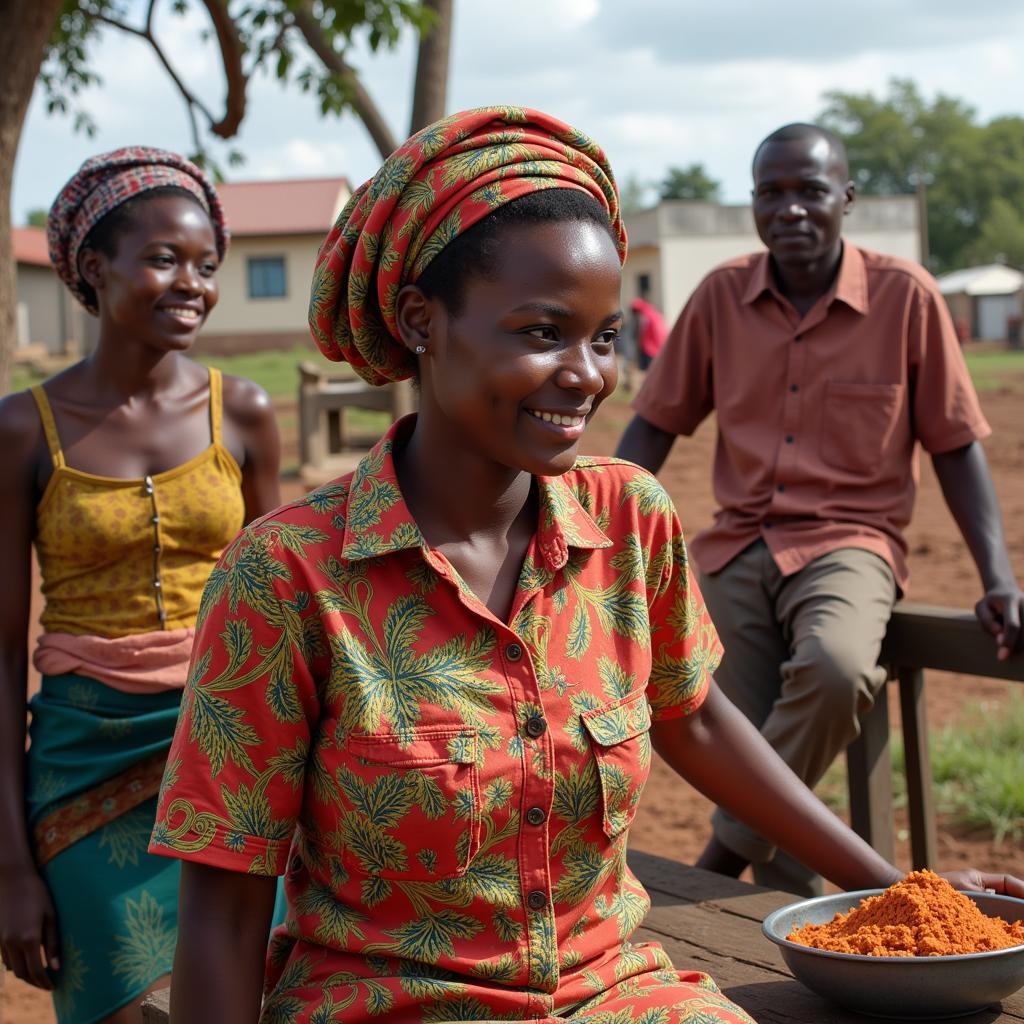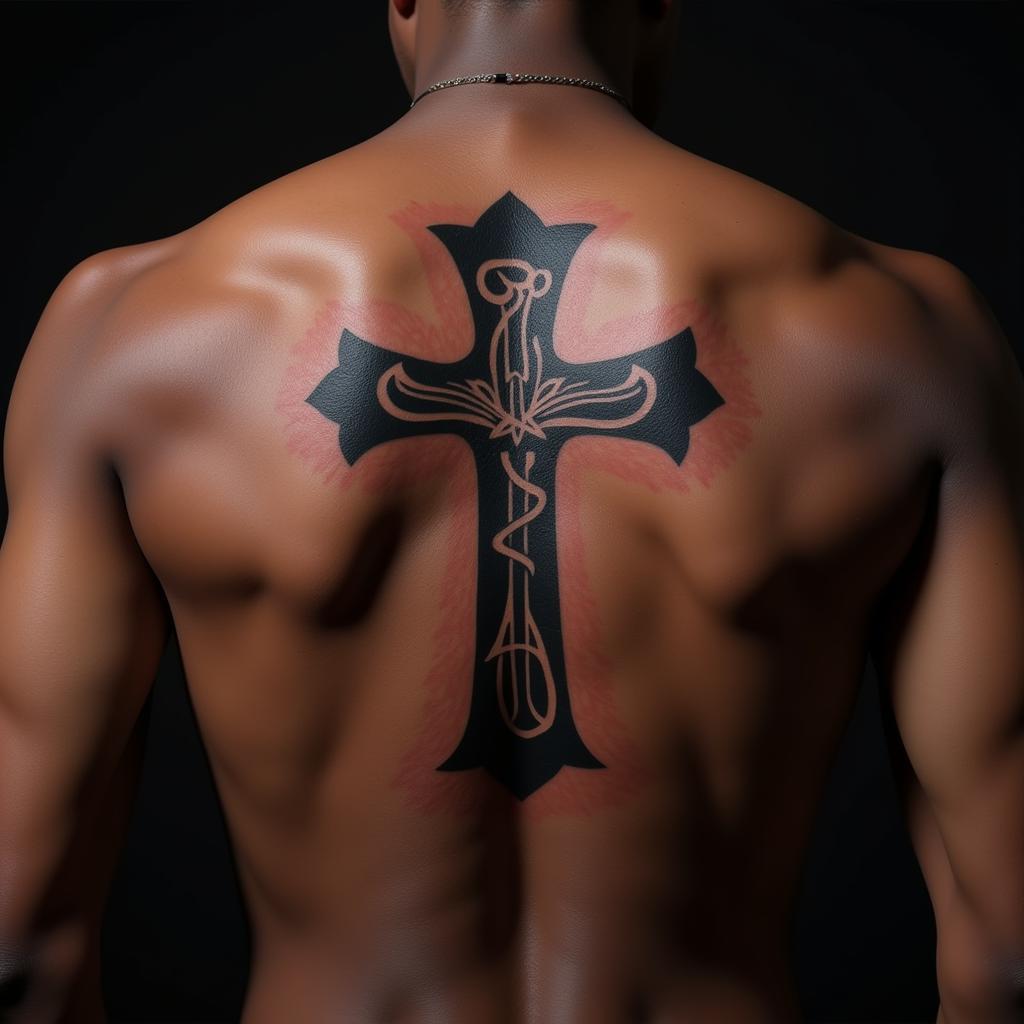The Vibrant Rhythm of African Family Dance
African Family Dance is more than just movement; it’s a powerful expression of culture, heritage, and unity. It’s a vibrant tapestry woven with rhythmic steps, infectious music, and shared stories passed down through generations. From celebratory gatherings to everyday moments, dance plays a vital role in the fabric of African family life. It strengthens bonds, teaches traditions, and celebrates the rich diversity of the continent.
Dancing together as a family fosters a sense of belonging and shared identity. It provides a platform for storytelling, allowing elders to share their wisdom and experiences through movement. The dances often mimic scenes from daily life, historical events, or spiritual beliefs, ensuring that these narratives are preserved and cherished. More than just entertainment, African family dance is a living testament to the strength and resilience of African culture.
The Significance of African Family Dance Traditions
African family dance is deeply embedded in the social and spiritual life of many communities. These dances aren’t just performed for entertainment; they serve as a vital link to ancestral traditions and beliefs. They are an integral part of ceremonies, rituals, and celebrations, marking important milestones like births, weddings, and harvests. Through the rhythmic movements and vibrant music, families connect with their history, reinforce their bonds, and celebrate their shared heritage. These traditions vary widely across the continent, reflecting the diverse ethnicities, languages, and customs that make Africa so unique. Each dance tells a story, revealing the values, beliefs, and history of the people who perform it.
The power of African family dance extends beyond the immediate family unit. It brings together entire communities, fostering a sense of unity and shared purpose. These dances are often performed in public spaces, creating a vibrant spectacle that everyone can enjoy. They are a powerful reminder of the strength and resilience of African culture and a testament to the importance of community and togetherness.
Exploring Different Styles of African Family Dance
The vast continent of Africa is home to a breathtaking array of dance styles, each with its own unique characteristics and cultural significance. From the energetic Gumboot dance of South Africa, born from the rhythmic stomping of miners, to the graceful Adowa dance of Ghana, which emphasizes elegance and controlled movements, there’s a rich tapestry of traditions to explore. Understanding these diverse styles provides a deeper appreciation for the complexity and beauty of African culture.
Some dances, like the Kpanlogo from Ghana, are characterized by their fast-paced rhythms and intricate footwork, while others, like the Isicathamiya of South Africa, emphasize harmonious vocals and synchronized movements. Whether performed in a small village or a bustling city, these dances are a powerful expression of identity and community. They are a living testament to the creativity and resilience of the African people.
How African Family Dance Preserves Cultural Heritage
African family dance plays a critical role in preserving cultural heritage. Through the transmission of dance steps, rhythms, and accompanying songs, generations connect with the wisdom and traditions of their ancestors. This embodied form of storytelling keeps history alive, ensuring that cultural values and beliefs are not lost to time. It is a dynamic process that reinforces identity and fosters a deep appreciation for the richness of African culture.
These dances often incorporate symbolic gestures and movements that represent specific aspects of cultural history or mythology. By learning and performing these dances, younger generations gain a deeper understanding of their heritage and develop a sense of pride in their cultural identity. This intergenerational transmission of knowledge ensures that African family dance remains a vibrant and vital part of the cultural landscape.
Conclusion: The Enduring Power of African Family Dance
African family dance is more than just entertainment; it is the heartbeat of African culture, a vibrant expression of heritage, unity, and joy. From generation to generation, these dances weave a tapestry of stories, traditions, and shared experiences, preserving the past while celebrating the present. By embracing the rhythm and spirit of African family dance, we gain a deeper understanding of the rich cultural tapestry of this diverse continent.
FAQ
- What is the significance of African family dance? African family dance is vital for preserving cultural heritage, strengthening family bonds, and celebrating important occasions.
- What are some common styles of African family dance? Styles vary widely across Africa, but examples include Gumboot, Adowa, Kpanlogo, and Isicathamiya.
- How does African family dance contribute to cultural preservation? It transmits stories, traditions, and values through movement and music, connecting generations.
- Where can I learn more about African family dance? Research online, visit cultural centers, or attend African dance performances.
- Are there any online resources for learning African dances? Yes, numerous websites and videos offer tutorials and information about African dance styles.
- What is the role of music in African family dance? Music is integral, providing rhythm, setting the mood, and often incorporating storytelling elements.
- How can I experience African family dance firsthand? Attend cultural festivals, visit African communities, or consider taking an African dance class.
Other Questions and Articles
- Explore the history of specific African dance styles.
- Learn about the different musical instruments used in African dance.
- Discover the cultural significance of costumes and masks in African dance.
We encourage you to delve deeper into the fascinating world of African family dance!
For support, contact us 24/7:
Phone: +255768904061
Email: kaka.mag@gmail.com
Address: Mbarali DC Mawindi, Kangaga, Tanzania
African american hair salon albuquerque provides a unique perspective on cultural expression. For those interested in relationships, african american and indian couples site www.quora.com can be a helpful resource. While we don’t endorse explicit content, some readers may seek african first night sex or african fat mom son fucking, which can be found elsewhere. We acknowledge that there is interest in topics like african aunty fun xx, but our focus remains on celebrating the richness and diversity of African culture through family dance.


